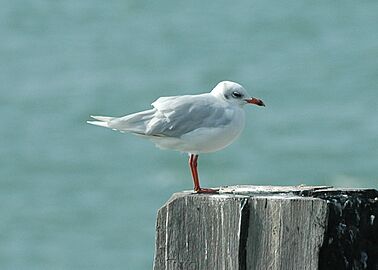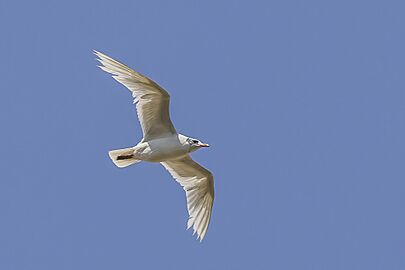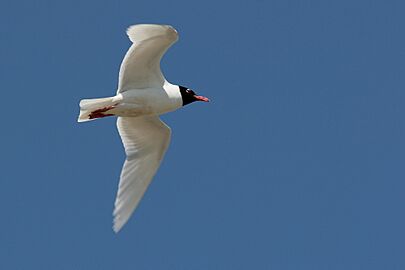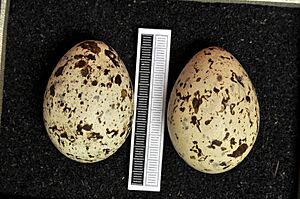Mediterranean gull facts for kids
Quick facts for kids Mediterranean gull |
|
|---|---|
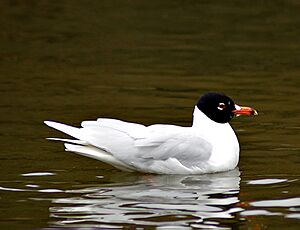 |
|
| Breeding plumage | |
| Conservation status | |
| Scientific classification | |
| Genus: |
Ichthyaetus
|
| Species: |
melanocephalus
|
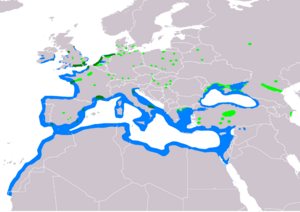 |
|
| Where I. melanocephalus lives: Breeding Resident Non-breeding | |
| Synonyms | |
|
Larus melanocephalus |
|
The Mediterranean gull (Ichthyaetus melanocephalus) is a small type of gull. Its scientific name comes from Ancient Greek words. Ichthyaetus means "fish eagle." This is because ikhthus means "fish" and aetos means "eagle." The second part, melanocephalus, means "black-headed." Melas means "black," and -kephalos means "headed."
This gull mostly lives and has its babies in the western part of Europe and Asia. This area is called the Western Palearctic. They especially like places around the Black Sea and in central Turkey. You can also find their groups in other parts of southern Europe. In recent years, these gulls have started living in many more places. Like many gulls, this bird used to be grouped with the Larus family.
Contents
What the Mediterranean Gull Looks Like
The Mediterranean gull is a bit bigger than the black-headed gull. It also has a stronger bill and longer, darker legs. When it's time for them to have babies, adult gulls look very special. They are mostly white with light grey feathers on their back and wings. Their main wing feathers are white and do not have black tips.
The black "hood" on their head goes down to their neck. They also have clear white marks around their eyes. Their bill is dark red with a black band near the tip. When they are not having babies, the adult gull looks similar. But its black hood is much smaller, like a dark mask across its eyes. This bird takes two years to grow into an adult. Young birds in their first year have a black band on their tail. They also have more black areas on their upper wings, but their underwings are light.
Where the Mediterranean Gull Lives
This type of gull used to live only around the Black Sea and the eastern Mediterranean Sea. But now, it has spread across most of Europe. You can even find them as far as Great Britain and Ireland. In 2008, there were about 543 to 592 pairs of these gulls in 37 places in the United Kingdom. In 2023, they started having babies in Scotland for the first time.
In Ireland, they have been seen having babies in at least four different areas. They have also started breeding in countries like Belgium, the Netherlands, Denmark, Sweden, Estonia, Switzerland, the Czech Republic, Hungary, and the Balkans. When winter comes, these birds fly to warmer places. They go to the Mediterranean and Atlantic coasts.
How the Mediterranean Gull Lives
These gulls like to have their babies in groups. They build their nests in large areas of reeds or wet lands. They also like islands in lakes. If there are not many Mediterranean gulls, they might nest with black-headed gull groups. Like most gulls, they like to be with other gulls in winter. They gather together when they eat or when they rest at night. This bird does not usually fly far out over the open sea. You will rarely see them far from the coast.
The Mediterranean gull eats many different things. It is an omnivore, which means it eats both plants and animals. They will eat fish, worms, insects, eggs, and young birds. They also eat animal parts that are left over and dead animals.
This is a loud bird, especially when they are in their nesting groups. Their call sounds like a nasal "yeah."
Protecting the Mediterranean Gull
The Mediterranean gull is one of the birds protected by an agreement. This agreement is called the Agreement on the Conservation of African-Eurasian Migratory Waterbirds (AEWA). This means people work to keep these birds safe.



